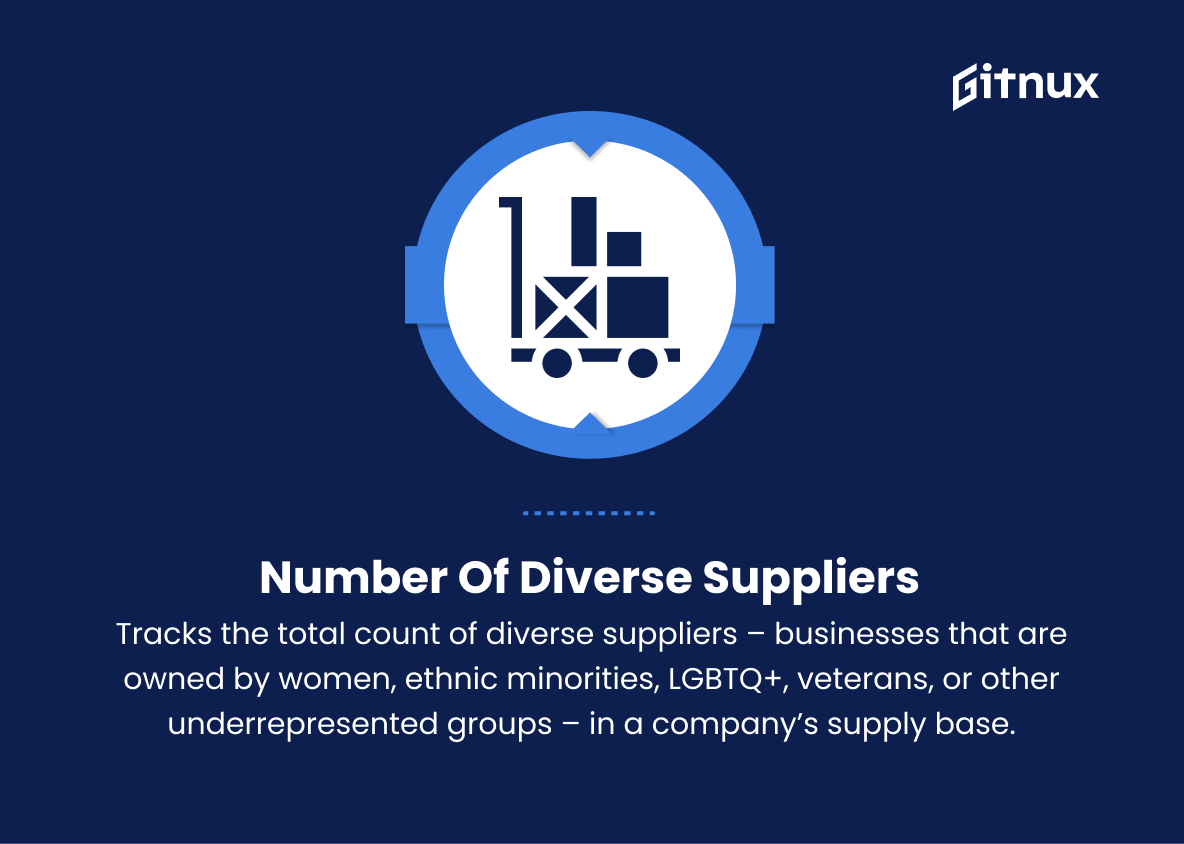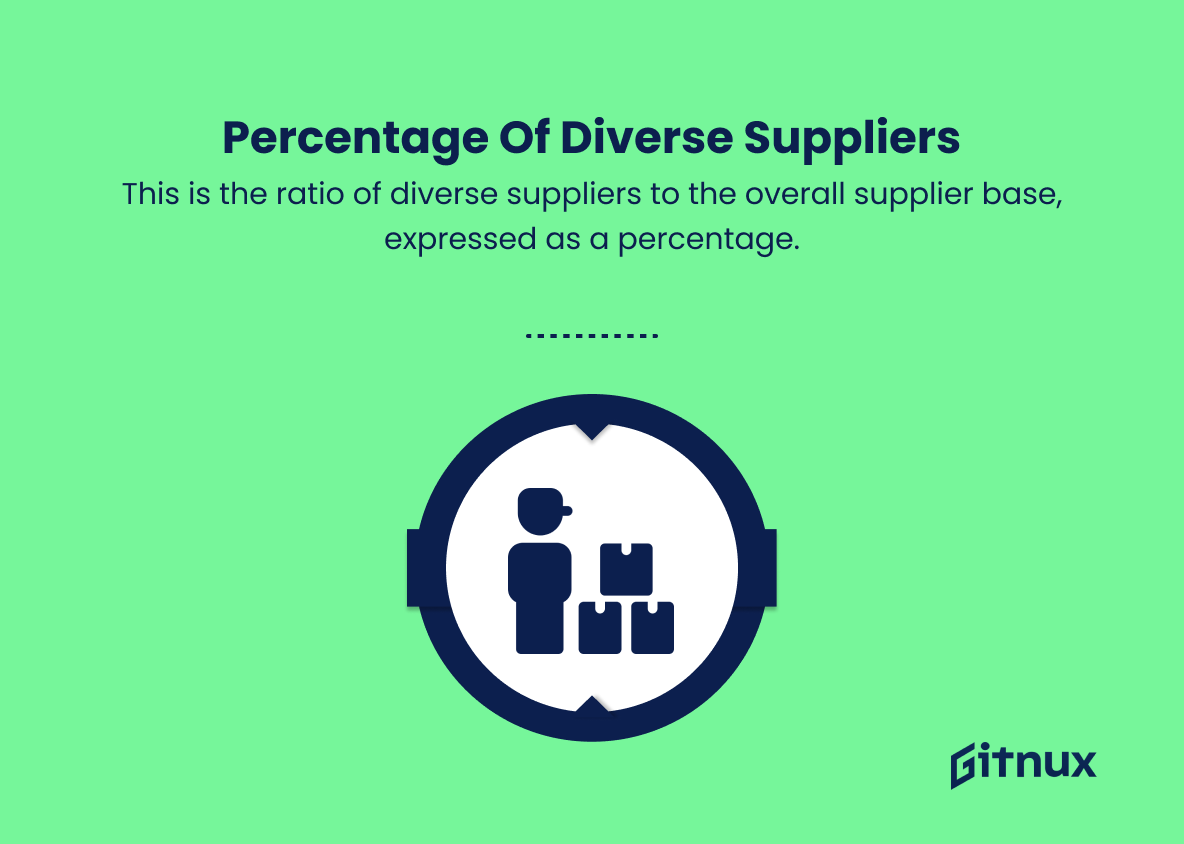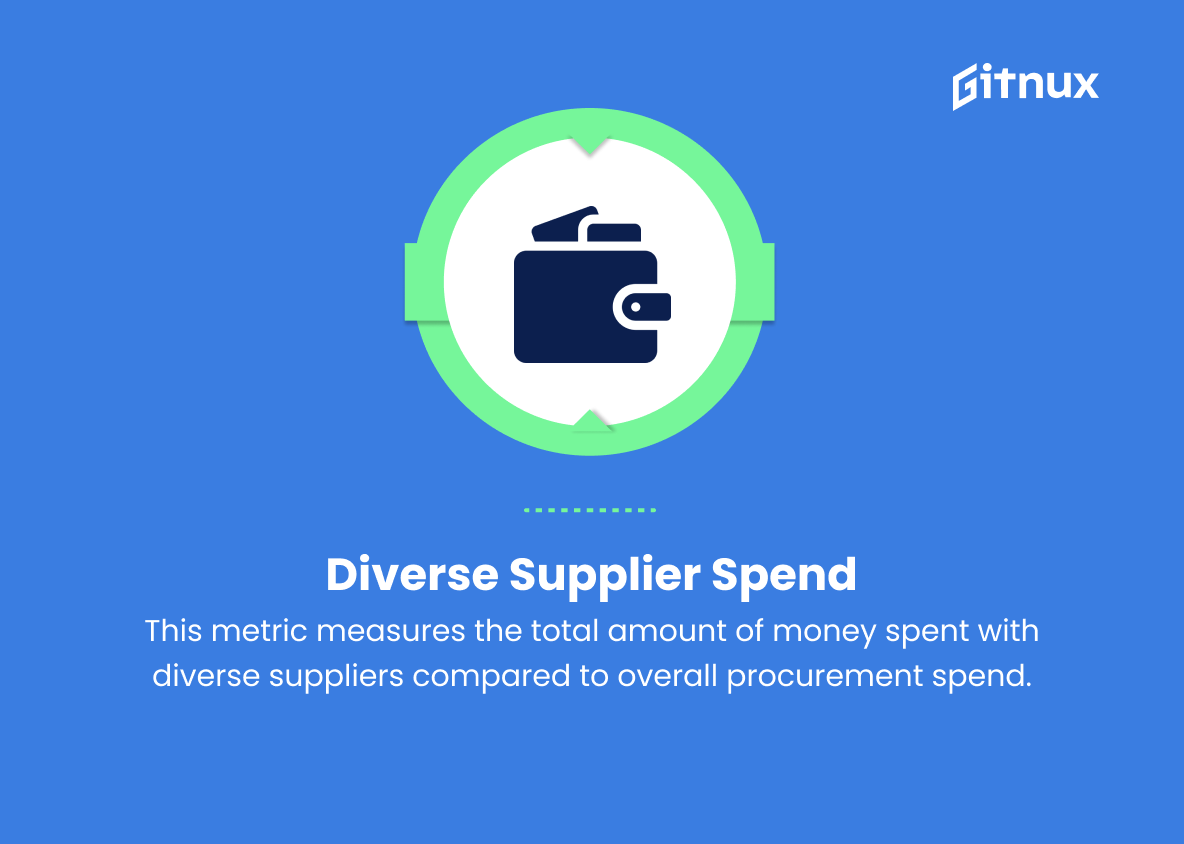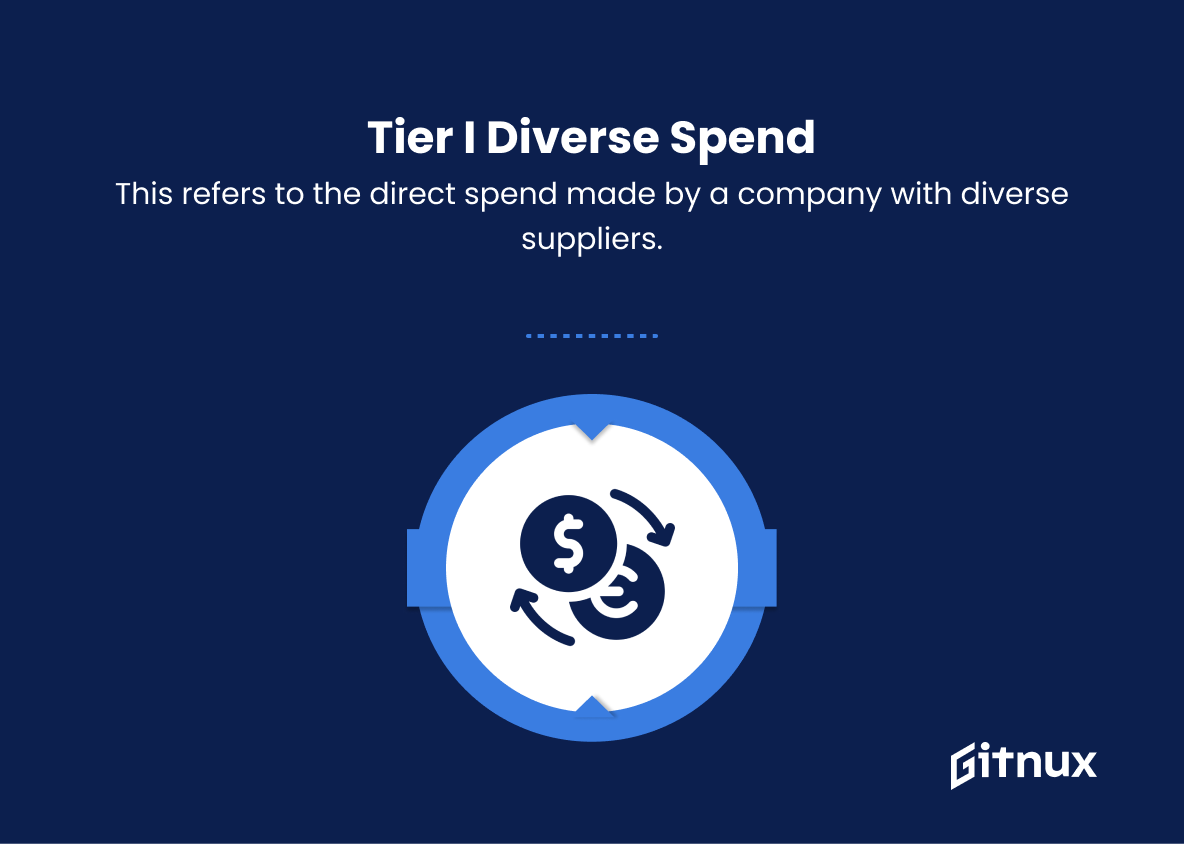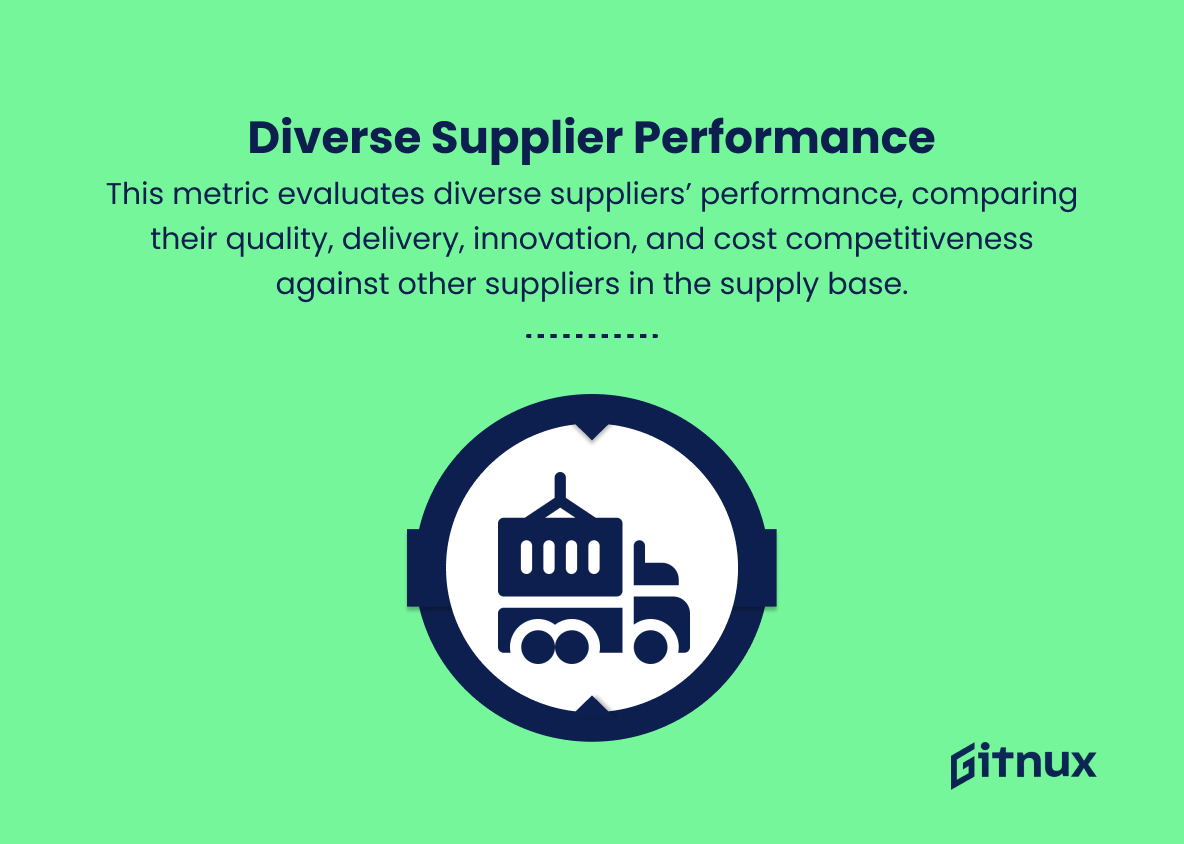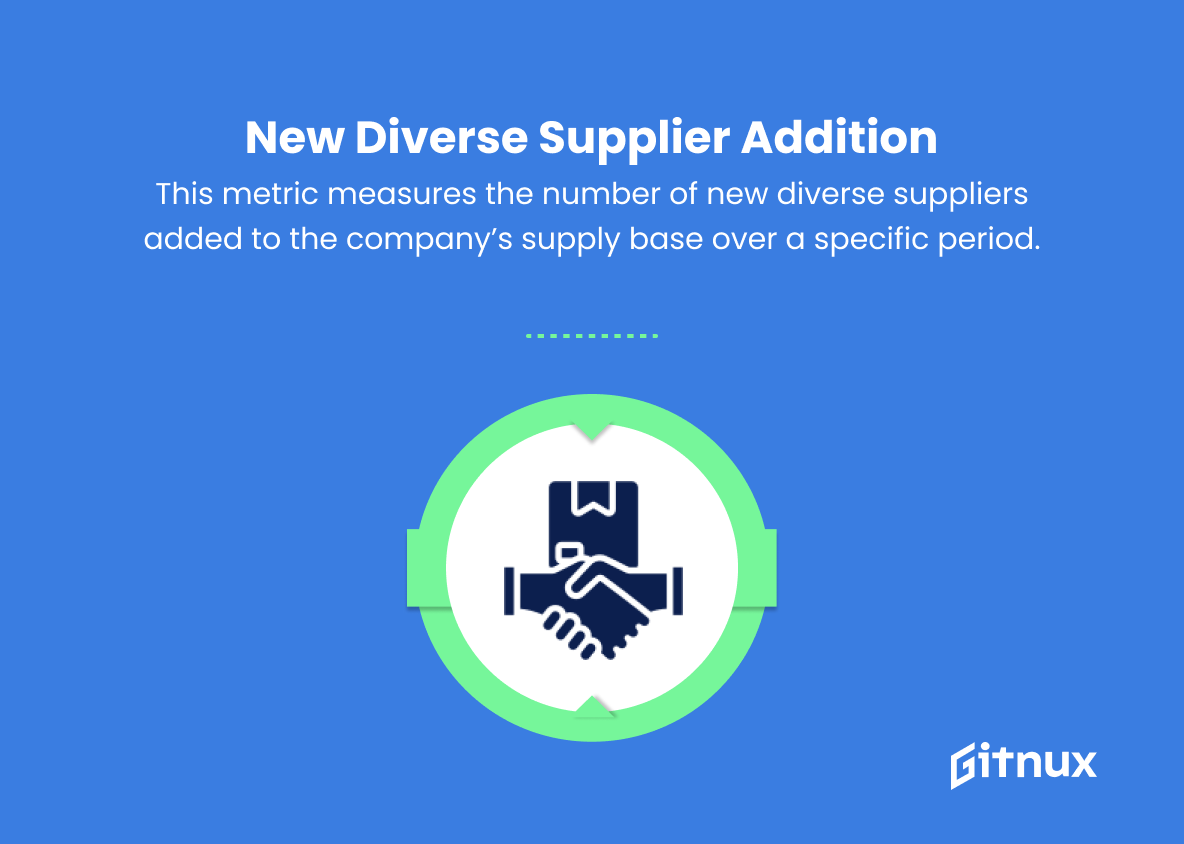Supplier diversity metrics are critical in today’s diverse global economy. Embracing diverse suppliers is essential for companies to remain competitive and socially responsible. This blog post explores supplier diversity metrics, their role in driving positive change, and how to track and optimize supplier diversity programs. Gain knowledge and insights to make informed decisions, foster partnerships, and contribute to a more equitable and sustainable world.
Supplier Diversity Metrics You Should Know
1. Number of diverse suppliers
This metric tracks the total count of diverse suppliers – businesses that are owned by women, ethnic minorities, LGBTQ+, veterans, disabled individuals, or other underrepresented groups – in a company’s supply base.
2. Percentage of diverse suppliers
This is the ratio of diverse suppliers to the overall supplier base, expressed as a percentage. This helps companies identify opportunities for improvement and measure progress against their supplier diversity goals.
3. Diverse supplier spend
This metric measures the total amount of money spent with diverse suppliers compared to overall procurement spend. It demonstrates the financial impact of the supplier diversity program and its progress over time.
4. Tier I diverse spend
This refers to the direct spend made by a company with diverse suppliers. It is an important metric to gauge the company’s commitment to supporting diverse suppliers through direct spending.
5. Tier II diverse spend
This metric reflects indirect spend or procurement through non-diverse suppliers that, in turn, have diverse suppliers in their own supply chains. It is essential as it shows a company’s commitment to supporting diverse businesses further down the supply chain.
6. Economic impact
This metric quantifies the economic impact generated by a company’s diverse supplier relationships, such as job creation, tax revenue, and overall economic growth within communities that benefit from these partnerships.
7. Supplier diversity program maturity
This is a qualitative assessment of the overall development and sophistication of a company’s supplier diversity program, typically evaluated on a scale ranging from “nascent” (new) to “mature” (established and effective).
8. Diverse supplier performance
This metric evaluates diverse suppliers’ performance, comparing their quality, delivery, innovation, and cost competitiveness against other suppliers in the supply base.
9. Certification rate
This metric monitors the percentage of diverse suppliers who obtain third-party certifications from recognized organizations or agencies, verifying their diversity status. This is important as it helps maintain credibility and trust with potential buyers and stakeholders.
10. Size distribution of diverse suppliers
This metric determines the number and percentage of diverse suppliers based on their size (small, medium, or large), providing valuable insight into the diversity of the company’s supplier base.
11. Diversity and inclusion training
This metric tracks the extent to which a company provides training on diversity and inclusion issues, as well as supplier diversity best practices, to employees involved in procurement or related activities.
12. New diverse supplier addition
This metric measures the number of new diverse suppliers added to the company’s supply base over a specific period, indicating the organization’s on-going commitment to expand and diversify their supplier base.
Supplier Diversity Metrics Explained
Supplier diversity metrics are crucial for promoting inclusivity and supporting underrepresented groups in supply chains. They help companies identify areas for improvement and measure progress against diversity goals. Diverse supplier spend indicates financial impact and supports economic growth. A company’s supplier diversity program maturity, diverse supplier performance, certification rate, and size distribution show commitment to inclusivity. Assessing diversity and inclusion training and adding new diverse suppliers promotes understanding and inclusion. Supplier diversity metrics provide valuable insights into promoting a diverse and equitable global supply chain.
Conclusion
Supplier diversity metrics are vital for creating an inclusive and sustainable supply chain. By valuing and tracking these metrics, businesses can drive innovation, promote economic growth, and establish themselves as ethical leaders. An organization’s commitment to supplier diversity can also enhance its partnerships, brand reputation, and resilience. By consistently improving their supplier diversity metrics, companies can build a strong foundation for future success and contribute to a more equitable society.
